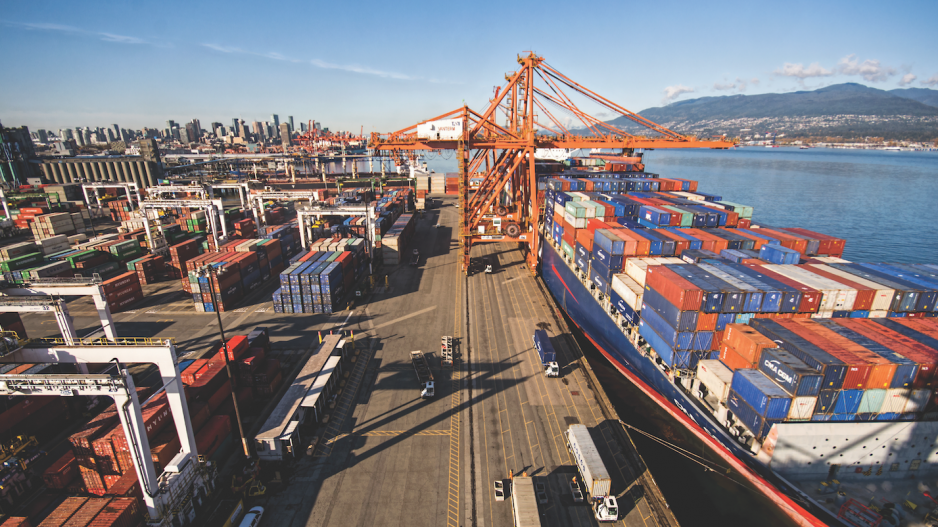Transpacific shipping forecast 2019: volatile Sino-American trade winds forming dark clouds on the horizon.
Other complicating factors for global container carriers include the Brexit effect, overcapacity, depressed freight rates, economic slowdowns, technological disruptions and multibillion-dollar spikes in operating costs from an International Maritime Organization mandate that carriers reduce their sulphur dioxide emissions.
The shipping business weather report rolling into 2019 therefore is not great for container carriers servicing the transpacific and other major trade routes.
The overall seaborne trade forecast, however, is brighter. But it depends in large part on the status of the trade and tariff war between the United States and China.
The United Nations Conference on Trade and Development notes in its 2018 report that global seaborne trade is doing relatively well. It expanded by 4% in 2017 to reach 10.7 billion tonnes and is expected to increase by the same percentage in 2018.
Major container shipping companies are hoping that outlook is more than misplaced optimism.
In its nine-month 2018 financial report, Hapag-Lloyd cited IHS Global Insight projections of global container shipments increasing 4.9% to approximately 153 million 20-foot-equivalent units (TEUs) in 2019 in the wake of a 4% increase in 2018.
But Germany’s largest container shipping company also noted that the International Monetary Fund had lowered its global economic growth forecast by 0.2 percentage points since its April forecast to 3.7% for 2018 and 2019.
The downgrade is based in part on increased risk of a global economic slowdown.
And any slowdown would have significant consequences for international trade and the companies that service it.
As Hapag-Lloyd financials noted, “The existing global macroeconomic uncertainties and ongoing stiff competition could have a significant negative impact on the development of transport volumes and freight rates.… Significant risks for the Group’s revenue and earnings development include a further sharp slowdown in global economic and trade volume growth.”
B.C.’s ports have thus far been spared any major collateral damage from the China-U.S. trade and tariff war.
Vancouver recently graduated into the list of the world’s top 50 container ports as compiled by the U.S.-based Journal of Commerce. Its 10.9 per cent increase to 3.25 million TEUs handled in 2017 ranked it No. 47. Mid-year 2018 cargo numbers showed container cargo through the Port of Vancouver up five per cent to a record 1.64 million TEUs and up 16 per cent through the Port of Prince Rupert to 591,335 TEUs compared with 2017’s first six months.
In December, DP World’s Fairview container terminal celebrated a historic milestone. For the first time in a calendar year, the Port of Prince Rupert facility handled one million containers. When it opened in 2008, Fairview moved only 182,523 TEUs.
The Vancouver Fraser Port Authority is banking on B.C. ports maintaining their recent tally of robust container volume increases.
Its case for investing between $2 billion and $3 billion in the Terminal 2 container terminal project at Roberts Bank includes projected increases of between 2.1% and 3.7% in annual containerized cargo volumes between 2017 and 2040. The low-end forecast would have 6.7 million TEUs handled annually by B.C. ports; the high end would raise that total to 9.7 million.
But uncertainty continues to cloud trade forecasts, especially for 2019.
U.K.-based shipping consultancy Drewry noted in its most recent container shipping outlook that the volatility of tariff standoffs and trade war rhetoric between the United States and China, coupled with uncertainty over Brexit, make it extremely difficult to provide any accurate projections about trade growth on major shipping routes.
Neil Davidson, senior analyst in Drewry’s ports and terminals practice, noted that without the ongoing China-U.S. tariff war and the Brexit battle, annual container trade would likely be growing at 3.5% over the next five years; however, the worst-case scenario from those uncertainties could cut that figure to 1.5% annually.
“This, though, has required some bold assumptions,” Davidson said, “in particular that one-third of China-U.S. trade will continue to flow, one-third will switch from China to alternative sources such as Southeast Asia and one-third will no longer move by sea, but instead be from Mexico and Canada or produced domestically in the U.S.”
The company’s container ports briefing in mid-December noted that average growth rates of cargo handled by global container ports have been slowing since they peaked in 2018’s first quarter.
“The key question now,” said Davidson, “is how long and how deep that slowing will be.”
He noted that the China-U.S. trade war had increased the flow of containers to North American ports in 2018’s third quarter “as shippers seek to build up import stocks in the U.S. before the tariffs really bite hard.”
But trade uncertainty caused by the dispute has eroded valuations of major port companies.
Davidson said most of their share prices had fallen by double digits during 2018’s third quarter as “the performance within our coverage universe suffered one of its worst periods.”
Oxford Economics is more optimistic about 2019.
Its December research briefing noted that while capacity pressures and underlying inflation “have created an air of gloom around economic and financial prospects for 2019 … we think that global growth is likely to nudge up after the recent soft patch.”•
trenshaw@biv.com
@timothyrenshaw



